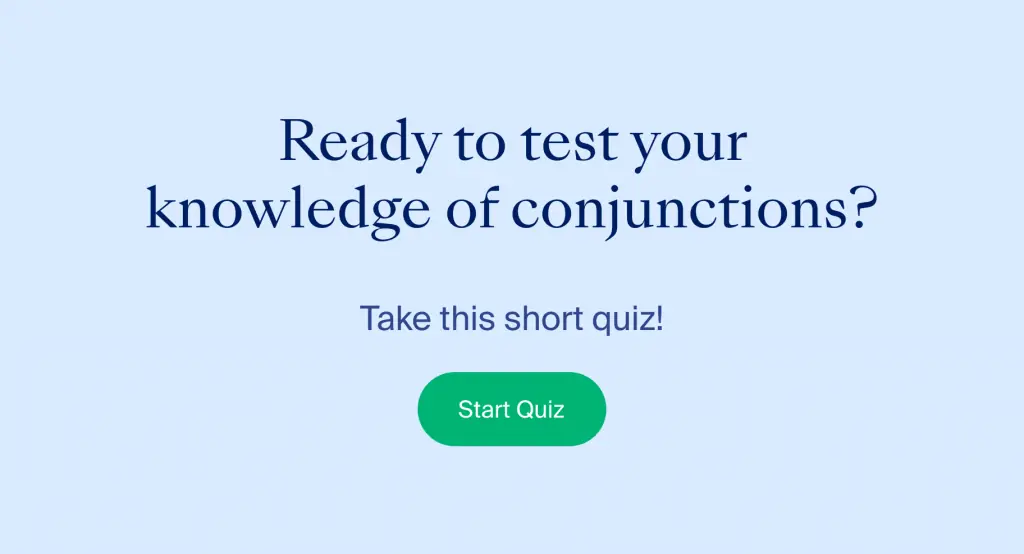- 3-minute read
- 14th October 2017
Vocabulary Tips: Understanding Conjunctions
The world is all about connections. Connections between people. Connections between ideas. And, crucially, connections between words. That’s why you need to understand conjunctions.
Conjunctions are words that link other words. But different conjunctions work in different ways, so you need to know how to use them. Luckily, we’re here for your grammatical needs.
Coordinating Conjunctions
There are seven coordinating conjunctions: ‘for’, ‘and’, ‘nor’, ‘but’, ‘or’, ‘yet’, and ‘so’. Each one has a specific use, but all of them link words, phrases or clauses of equal rank. The ‘rank’ bit here is what makes them coordinating conjunctions. It simply means that these terms link words or phrases of equal importance. For example:
He is tall and skinny.
She is kind but a little bit shy.
The terms of either side of the conjunctions above are equally important. We could even switch them round without changing the meaning of the sentences. In other words, they’re coordinate.

Coordinating conjunctions can also link independent clauses (i.e. clauses that could be used as a full sentence). When doing this, we usually put a comma before the conjunction:
You can stay here, or you can go to the beach.
Here, for example, ‘You can stay here’ and ‘You can go to the beach’ would both work as sentences by themselves. But we link them with ‘or’ to show the relationship between them. As when linking words, the clauses on either side of the conjunction are of equal status.
Finally, we should note that it’s fine to start a sentence with a coordinating conjunction. However, the sentence needs to be a full independent clause when doing this.
Subordinating Conjunctions
There are more subordinating conjunctions than we can list here, but they all to do two things:
- Specify a time, place or causal relationship
- Show that part of a sentence is less important than the main clause
The second point here is because these terms link an independent clause and a dependent clause in a sentence. For example:
Find this useful?
Subscribe to our newsletter and get writing tips from our editors straight to your inbox.
I am excited because it’s my birthday.
I cry whenever I watch sad films.
In the first sentence, the subordinating conjunction ‘because’ introduces a reason for the main clause. With the second, ‘whenever’ introduces the condition under which I cry. In both cases, the sense of the clause introduced by the conjunction is dependent on the main clause.

We can change the order of clauses in these sentences. But when we use a subordinating conjunction at the start of a sentence, we need to use a comma before the main clause:
Because it’s my birthday, I am excited.
Whenever I watch sad films, I cry.
This helps to indicate where the main (and most important) clause begins.
Correlative Conjunctions
Finally, we have correlative conjunctions. These terms include ‘either… or’, ‘neither… nor’, ‘both… and’, and ‘not only… but also’. These are correlative because they come in two parts that work together to show the relationship between parts of a sentence. For instance:
He is neither qualified nor responsible enough for the job.
She is either reckless or brave.
With these terms, it’s important to complete the correct pair. For instance, if using ‘neither’ to introduce two alternatives, it should always be followed by ‘nor’ (not ‘or’). If you use the wrong term, or forget the correlating part of the conjunction, your sentence will be ungrammatical.
